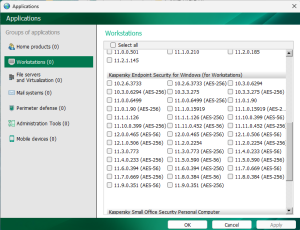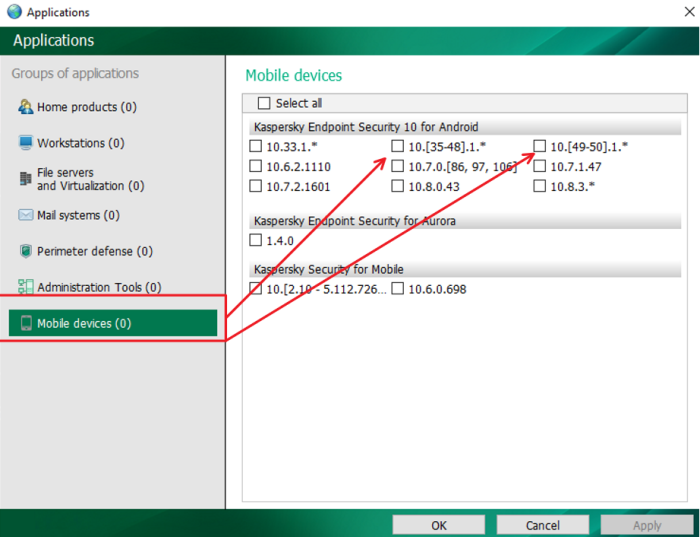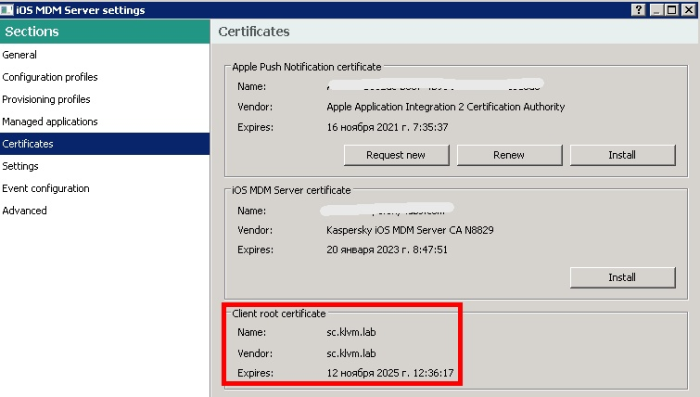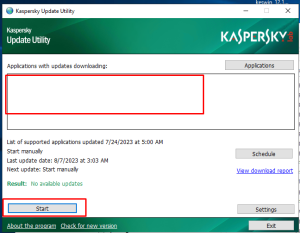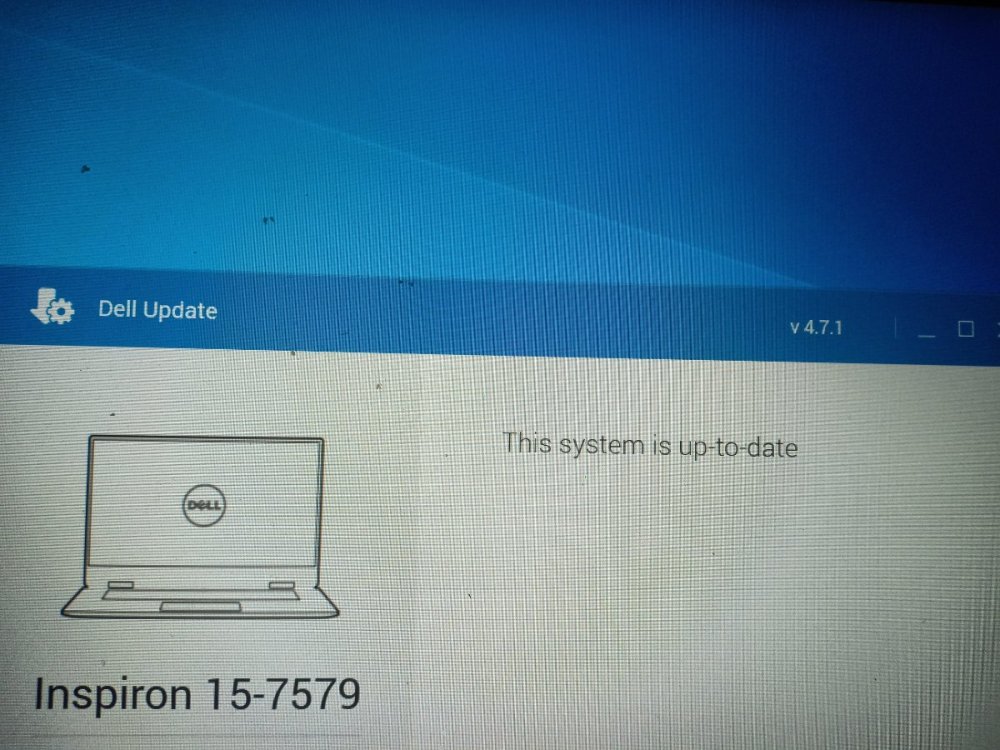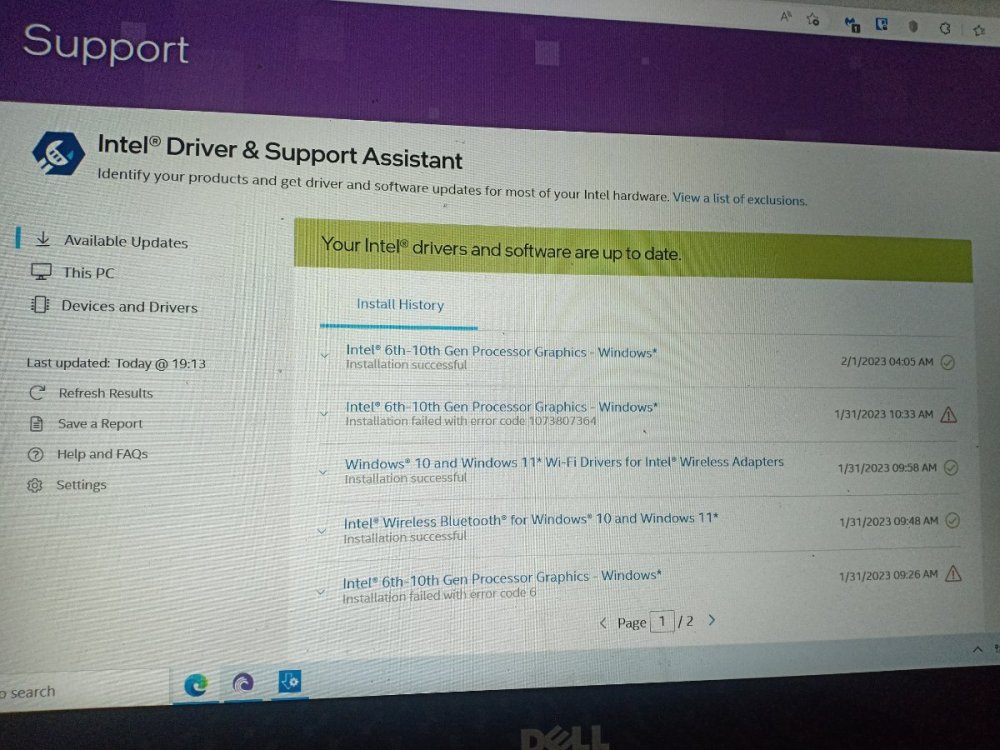Search the Community
Showing results for 'update utility'.
-
Kaspersky Endpoint Security 12.6 for Windows beta Download actual beta build WHAT'S NEW IN KASPERSKY ENDPOINT SECURITY Kaspersky Endpoint Security 12.6 for Windows offers the following features and improvements: 1. The functionality for integration with Kaspersky SIEM solution - Kaspersky Unified Monitoring and Analysis Platform (KUMA) - has been added. Previously, you could configure integration with KUMA via Kaspersky Security Center only. Now you can directly add a computer with installed Kaspersky Endpoint Security to the KUMA console. As a result, KUMA will process Windows event logs data, received in CEF format. 2. A new component - System Integrity Monitoring - has been added. The component monitors changes in the operating system that may indicate computer security breaches. When such changes are detected, Kaspersky Endpoint Security generates corresponding events and alerts the administrator. 3. The status of the installed built-in EDR agent (KATA) has been added to the computer properties in the Kaspersky Security Center console. Now, if you have a built-in EDR agent (KATA) installed, the Endpoint Sensor status parameter displays the current status of the component (e.g., Running, Stopped, Not supported by license, etc.). 4. Exclusions recommended by Kaspersky for correct operation on servers have been added to the trusted zone. Such exclusions include, for example, MDF and LDF database files for SQL servers. By default, the built-in exclusions are disabled. 5. The display of alert details for Kaspersky Endpoint Detection and Response Optimum has been moved from the Kaspersky Endpoint Security management plug-in to a separate Kaspersky Endpoint Detection and Response management plug-in. The EDR management plugin is a single plugin for working with agents on Windows, Mac and Linux operating systems. Now, when working with EDR Optimum, you will need Kaspersky Endpoint Security management plug-in to create threat response tasks and EDR management plug-in to view alert details. MINIMUM HARDWARE AND SOFTWARE REQUIREMENTS To ensure proper operation of Kaspersky Endpoint Security, your computer must meet the following requirements: Minimum general requirements: · 2 GB of free disk space on the hard drive; · CPU: · Workstation: 1 GHz; · Server: 1.4 GHz; · Support for the SSE2 instruction set. · RAM: · Workstation (x86): 1 GB; · Workstation (x64): 2 GB; · Server: 2 GB; · Server to install the application with a built-in agent for Kaspersky Anti Targeted Attack Platform (EDR): 8 GB. Workstations Supported operating systems for workstations: · Windows 7 Home / Professional / Ultimate / Enterprise Service Pack 1 or later; · Windows 8 Professional / Enterprise; · Windows 8.1 Professional / Enterprise; · Windows 10 Home / Pro / Pro for Workstations / Education / Enterprise / Enterprise multi-session; · Windows 11 Home / Pro / Pro for Workstations / Education / Enterprise. Kaspersky Endpoint Security cannot be installed on Microsoft Windows 7 without installed operating system updates: KB4490628 (March 12, 2019) and KB4474419 (September 23, 2019). For details about support for the Microsoft Windows 10 operating system, please refer to the Technical Support Knowledge Base https://support.kaspersky.com/common/compatibility/13036. For details about support for the Microsoft Windows 11 operating system, please refer to the Technical Support Knowledge Base https://support.kaspersky.com/common/compatibility/15778. Servers Kaspersky Endpoint Security supports core components of the application on computers running the Windows operating system for servers. You can use Kaspersky Endpoint Security for Windows instead of Kaspersky Security for Windows Server on servers and clusters of your organization (Cluster Mode). The application also supports Core Mode (see known issues https://support.kaspersky.com/help/KESWin/12.6/en-US/201943.htm). Supported operating systems for servers: · Windows Small Business Server 2011 Essentials / Standard (64-bit); Microsoft Small Business Server 2011 Standard (64-bit) is supported only if Service Pack 1 for Microsoft Windows Server 2008 R2 is installed. · Windows MultiPoint Server 2011 (64-bit); · Windows Server 2008 R2 Foundation / Standard / Enterprise / Datacenter Service Pack 1 or later; · Windows Web Server 2008 R2 Service Pack 1 or later; · Windows Server 2012 Foundation / Essentials / Standard / Datacenter (including Core Mode); · Windows Server 2012 R2 Foundation / Essentials / Standard / Datacenter (including Core Mode); · Windows Server 2016 Essentials / Standard / Datacenter (including Core Mode); · Windows Server 2019 Essentials / Standard / Datacenter (including Core Mode); · Windows Server 2022 Standard / Datacenter / Datacenter: Azure Edition (including Core Mode). Kaspersky Endpoint Security cannot be installed on Microsoft Windows Server 2008 R2 without installed operating system updates: KB4490628 (March 12, 2019) and KB4474419 (September 23, 2019). For details about support for the Microsoft Windows Server 2016 and Microsoft Windows Server 2019 operating systems, please refer to the Technical Support Knowledge Base https://support.kaspersky.com/common/compatibility/13036. For details about support for the Microsoft Windows Server 2022 operating system, please refer to the Technical Support Knowledge Base https://support.kaspersky.com/common/compatibility/15778. Unsupported operating systems for servers: · Windows Server 2003 Standard / Enterprise / Datacenter SP2 or later; · Windows Server 2003 R2 Foundation / Standard / Enterprise / Datacenter SP2 or later; · Windows Server 2008 Standard / Enterprise / Datacenter SP2 or later; · Windows Server 2008 Core Standard / Enterprise / Datacenter SP2 or later; · Microsoft Small Business Server 2008 Standard / Premium SP2 or later. Virtual platforms Supported virtual platforms: · VMware Workstation 17.5 Pro; · VMware ESXi 8.0 Update 2; · Microsoft Hyper-V Server 2019; · Citrix Virtual Apps and Desktops 7 2311; · Citrix Provisioning 2311; · Citrix Hypervisor 8.2 (Cumulative Update 1). Kaspersky Security Center support Kaspersky Endpoint Security supports operation with the following versions of Kaspersky Security Center: · Kaspersky Security Center 13 · Kaspersky Security Center 13.1 · Kaspersky Security Center 13.2 · Kaspersky Security Center 13.2.2 · Kaspersky Security Center 14 · Kaspersky Security Center 14.1 · Kaspersky Security Center 14.2 · Kaspersky Security Center Linux 14.2 · Kaspersky Security Center Linux 15 · Kaspersky Security Center Linux 15.1 The administration web plug-in for Kaspersky Endpoint Security for Windows version 12.6 is compatible with Kaspersky Security Center Web Console version 14.2 or later. UPGRADING A PREVIOUS VERSION OF THE APPLICATION Kaspersky Endpoint Security supports updates for the following versions of the application: · Kaspersky Endpoint Security 11.9.0 for Windows (build 11.9.0.351). · Kaspersky Endpoint Security 11.10.0 for Windows (build 11.10.0.399). · Kaspersky Endpoint Security 11.11.0 for Windows (build 11.11.0.452). · Kaspersky Endpoint Security 12.0 for Windows (build 12.0.0.465). · Kaspersky Endpoint Security 12.1 for Windows (build 12.1.0.506). · Kaspersky Endpoint Security 12.2 for Windows (build 12.2.0.462). · Kaspersky Endpoint Security 12.3 for Windows (build 12.3.0.493). · Kaspersky Endpoint Security 12.4 for Windows (build 12.4.0.467). · Kaspersky Endpoint Security 12.5 for Windows (build 21.17.7.539). CHECKING COMPATIBILITY WITH KASPERSKY FULL DISK ENCRYPTION The limitations of Kaspersky full disk encryption support and the list of devices for which hard disk encryption is supported with limitations are listed in the article https://support.kaspersky.com/15018. Before using Kaspersky full disk encryption, we recommend checking compatibility using the FDE Test Utility. You can download the utility and find detailed information about its operation and usage on the Knowledge Base page https://support.kaspersky.com/14328. The FDE Test Utility is intended to perform the following functions: · Check the computer’s compatibility with Kaspersky full disk encryption. · Collect extended diagnostic information if a computer is incompatible with Kaspersky full disk encryption. To check if your computer is compatible with Kaspersky full disk encryption, use FDE Test Utility 11.14.0.4. COMPATIBILITY WITH KASPERSKY ENDPOINT AGENT Kaspersky is switching all Detection and Response to working with the Kaspersky Endpoint Security built-in agent instead of Kaspersky Endpoint Agent. Starting with version 12.1, the application supports all Detection and Response solutions. In addition, starting with version 12.1, the application is no longer compatible with Kaspersky Endpoint Agent, and installing both applications side by side on the same computer is no longer possible. MAIN KNOWN ISSUES The list of limitations and known issues is available in the user documentation https://support.kaspersky.com/help/KESWin/12.6/en-US/201943.htm.
-
Kaspersky Endpoint Security для Windows 12.6 beta Скачать последнюю актуальную бета версию ЧТО НОВОГО В KASPERSKY ENDPOINT SECURITY В Kaspersky Endpoint Security для Windows 12.6 появились следующие возможности и улучшения: 1. Добавлена возможность интеграции с SIEM-решением от "Лаборатории Касперского" – Kaspersky Unified Monitoring and Analysis Platform (KUMA). Ранее вы могли настроить интеграцию с KUMA только через Kaspersky Security Center. Теперь вы можете добавить компьютер с установленным Kaspersky Endpoint Security в консоль KUMA напрямую. В результате KUMA будет обрабатывать данные из журналов событий Windows, полученные в CEF-формате. 2. Добавлен новый компонент Контроль целостности системы. Компонент отслеживает изменения в операционной системе, которые могут указывать на нарушения безопасности компьютера. Обнаружив такие изменения, Kaspersky Endpoint Security формирует соответствующие события и предупреждает администратора. 3. Добавлен статус установленного встроенного агента EDR (KATA) в свойствах компьютера в консоли Kaspersky Security Center. Теперь, если у вас установлен встроенный агент EDR (KATA), для параметра Статус Endpoint Sensor отображается текущий статус работы компонента (например, Выполняется, Остановлен, Не поддерживается лицензией и так далее). 4. В доверенную зону добавлены исключения, рекомендованные "Лабораторией Касперского", для корректной работы на серверах. К таким исключениям относятся, например, файлы баз данных MDF и LDF для SQL-серверов. По умолчанию встроенные исключения выключены. 5. Отображение деталей алерта для Kaspersky Endpoint Detection and Response Optimum перенесены из плагина управления Kaspersky Endpoint Security в отдельный плагин управления Kaspersky Endpoint Detection and Response. Плагин управления EDR является единым плагином для работы с агентами на операционных системах Windows, Mac и Linux. Теперь для работы с EDR Optimum вам нужен плагин управления Kaspersky Endpoint Security для создания задач реагирования на угрозы и плагин управления EDR для просмотра деталей алерта. МИНИМАЛЬНЫЕ АППАРАТНЫЕ И ПРОГРАММНЫЕ ТРЕБОВАНИЯ Для функционирования Kaspersky Endpoint Security компьютер должен удовлетворять следующим требованиям. Минимальные общие требования: · 2 ГБ свободного места на жестком диске; · процессор: · рабочая станция – 1 ГГц; · сервер – 1.4 ГГц; · поддержка инструкций SSE2. · оперативная память: · рабочая станция (x86) – 1 ГБ; · рабочая станция (x64) – 2 ГБ; · сервер – 2 ГБ; · сервер для установки приложения со встроенным агентом для Kaspersky Anti Targeted Attack Platform (EDR) – 8 ГБ. Рабочие станции Поддерживаемые операционные системы для рабочих станций: · Windows 7 Home / Professional / Ultimate / Enterprise Service Pack 1 и выше; · Windows 8 Professional / Enterprise; · Windows 8.1 Professional / Enterprise; · Windows 10 Home / Pro / Pro для рабочих станций / Education / Enterprise / Enterprise multi-session; · Windows 11 Home / Pro / Pro для рабочих станций / Education / Enterprise. Приложение Kaspersky Endpoint Security не может быть установлено на Microsoft Windows 7, если не установлены обновления операционной системы KB4490628 (обновление от 12 марта 2019) и KB4474419 (обновление от 23 сентября 2019). Особенности поддержки операционной системы Microsoft Windows 10 вы можете узнать в базе знаний Службы технической поддержки https://support.kaspersky.ru/common/compatibility/13036. Особенности поддержки операционной системы Microsoft Windows 11 вы можете узнать в базе знаний Службы технической поддержки https://support.kaspersky.ru/common/compatibility/15778. Серверы Kaspersky Endpoint Security поддерживает работу основных компонентов приложения на компьютерах под управлением операционной системы Windows для серверов. Вы можете использовать Kaspersky Endpoint Security для Windows вместо Kaspersky Security для Windows Server на серверах и кластерах организации (англ. Cluster Mode). Также приложение поддерживает режим основных серверных компонентов (англ. Core Mode) (см. известные ограничения https://support.kaspersky.com/help/KESWin/12.6/ru-RU/201943.htm). Поддерживаемые операционные системы для серверов: · Windows Small Business Server 2011 Essentials / Standard (64-разрядная); Microsoft Small Business Server 2011 Standard (64-разрядная) поддерживается только с установленным Service Pack 1 для Microsoft Windows Server 2008 R2. · Windows MultiPoint Server 2011 (64-разрядная); · Windows Server 2008 R2 Foundation / Standard / Enterprise / Datacenter Service Pack 1 и выше; · Windows Web Server 2008 R2 Service Pack 1 и выше; · Windows Server 2012 Foundation / Essentials / Standard / Datacenter (включая Core Mode); · Windows Server 2012 R2 Foundation / Essentials / Standard / Datacenter (включая Core Mode); · Windows Server 2016 Essentials / Standard / Datacenter (включая Core Mode); · Windows Server 2019 Essentials / Standard / Datacenter (включая Core Mode); · Windows Server 2022 Standard / Datacenter / Datacenter: Azure Edition (включая Core Mode). Приложение Kaspersky Endpoint Security не может быть установлено на Miсrosoft Windows Server 2008 R2, если не установлены обновления операционной системы KB4490628 (обновление от 12 марта 2019) и KB4474419 (обновление от 23 сентября 2019). Особенности поддержки операционной системы Microsoft Windows Server 2016 и Microsoft Windows Server 2019 вы можете узнать в базе знаний Службы технической поддержки https://support.kaspersky.ru/common/compatibility/13036. Особенности поддержки операционной системы Microsoft Windows Server 2022 вы можете узнать в базе знаний Службы технической поддержки https://support.kaspersky.ru/common/compatibility/15778. Неподдерживаемые операционные системы для серверов: · Windows Server 2003 Standard / Enterprise / Datacenter с пакетом обновлений SP2 или выше; · Windows Server 2003 R2 Foundation / Standard / Enterprise / Datacenter с пакетом обновлений SP2 или выше; · Windows Server 2008 Standard / Enterprise / Datacenter с пакетом обновлений SP2 или выше; · Windows Server 2008 Core Standard / Enterprise / Datacenter с пакетом обновлений SP2 или выше; · Microsoft Small Business Server 2008 Standard / Premium SP2 или выше. Виртуальные платформы Поддерживаемые виртуальные платформы: · VMware Workstation 17.5 Pro; · VMware ESXi 8.0 Update 2; · Microsoft Hyper-V Server 2019; · Citrix Virtual Apps and Desktops 7 2311; · Citrix Provisioning 2311; · Citrix Hypervisor 8.2 (Cumulative Update 1). Поддержка Kaspersky Security Center Kaspersky Endpoint Security поддерживает работу со следующими версиями Kaspersky Security Center: · Kaspersky Security Center 13; · Kaspersky Security Center 13.1; · Kaspersky Security Center 13.2; · Kaspersky Security Center 13.2.2; · Kaspersky Security Center 14; · Kaspersky Security Center 14.1; · Kaspersky Security Center 14.2; · Kaspersky Security Center Linux 14.2; · Kaspersky Security Center Linux 15; · Kaspersky Security Center Linux 15.1. Веб-плагин для управления Kaspersky Endpoint Security для Windows версии 12.6 совместим с Kaspersky Security Center Web Console версии 14.2 и выше. ОБНОВЛЕНИЕ ПРЕДЫДУЩЕЙ ВЕРСИИ ПРИЛОЖЕНИЯ Kaspersky Endpoint Security поддерживает обновление следующих версий приложения: · Kaspersky Endpoint Security для Windows 11.9.0 (сборка 11.9.0.351). · Kaspersky Endpoint Security для Windows 11.10.0 (сборка 11.10.0.399). · Kaspersky Endpoint Security для Windows 11.11.0 (сборка 11.11.0.452). · Kaspersky Endpoint Security для Windows 12.0 (сборка 12.0.0.465). · Kaspersky Endpoint Security для Windows 12.1 (сборка 12.1.0.506). · Kaspersky Endpoint Security для Windows 12.2 (сборка 12.2.0.462). · Kaspersky Endpoint Security для Windows 12.3 (сборка 12.3.0.493). · Kaspersky Endpoint Security для Windows 12.4 (сборка 12.4.0.467). · Kaspersky Endpoint Security для Windows 12.5 (сборка 21.17.7.539). ПРОВЕРКА СОВМЕСТИМОСТИ С ПОЛНОДИСКОВЫМ ШИФРОВАНИЕМ KASPERSKY Ограничения поддержки полнодискового шифрования Kaspersky и список устройств, для которых шифрование жестких дисков поддерживается с ограничениями, приведены в статье https://support.kaspersky.ru/15018. Перед применением полнодискового шифрования Kaspersky рекомендуется проверить совместимость с помощью утилиты FDE Test Utility. Загрузить утилиту и ознакомиться с подробной информацией о работе и ее использовании можно ознакомиться можно на странице в Базе знаний https://support.kaspersky.ru/14328. Утилита FDE Test Utility предназначена для выполнения следующих функций: · Проверка совместимости компьютера с полнодисковым шифрованием Kaspersky. · Сбор расширенной диагностической информации при несовместимости компьютера с полнодисковым шифрованием Kaspersky. Для проверки совместимости компьютера с полнодисковым шифрованием используйте утилиту FDE Test Utility 11.14.0.4. СОВМЕСТИМОСТЬ С KASPERSKY ENDPOINT AGENT "Лаборатория Касперского" переводит все решения Detection and Response на работу со встроенным агентом Kaspersky Endpoint Security вместо Kaspersky Endpoint Agent. Начиная с версии 12.1 приложение поддерживает работу со всеми решениями Detection and Response. Кроме того, начиная с версии 12.1 приложение больше несовместимо с Kaspersky Endpoint Agent, и установить оба этих приложения на одном компьютере невозможно. ОСНОВНЫЕ ИЗВЕСТНЫЕ ОШИБКИ Список ограничений и известных ошибок доступен в пользовательской документации https://support.kaspersky.com/help/KESWin/12.6/ru-RU/201943.htm. © 2024 АО "Лаборатория Касперского"
-
здравствуйте! Возникла проблема при запуске Kaspersky Update Utility 4.0 на AstraLinux. при запуске uu-gui.sh возникает ошибка Fatal: this application failed to start because it could not find or load the Qt platform plugin "xcb" in "". Available platform plugins are : xcb. Reinstalling the application may fix this problem. uu-gui.sh: строка 3: 5752 Аварийный останов LD_LIBRARY_PATH="$script_full_path" $script_full_path/UpdateUtility-Gui $@
-
Advice and Solutions (Forum Knowledgebase) Disclaimer. Read before using materials. 0 - Update completed successfully 1 - All files are up-to-date (No available updates) Result codes depending on OS type: Windows Linux(FreeBSD) -1 255 Command line parsing exception -2 254 Update Utility error (exception or another malfunction including incorrect command line arguments) -5 251 Update process failure (Not all components are updated, File does not exist on update source, Invalid file signature, Index file damaged, File is not valid XML structure or does not exist) or network error -6 250 Bases are not consistent after update -3 253 Fail (error code for other update process failures)
-
hi, I updated "kaspersky update utility" to the last version : 4.1.0.474 for offline mode update but the version of kaspersky endpoint security 11.10, 11.11, 12.0, 12.1 and 12.2 still not shown in interface as shown in attached file. why? and how to get the offline databases for latest versions of Kaspersky Endpoint security for business?
-
especially in the following folders, it produces 4 expired and useless files(ex: keds-220130a.keb; keds-220130b.keb; keiprbl-20-220130.keb; keiprbl-xbl-220130.keb) per day in every folder: kuu/Updates/bases/as/kas5/0/ kuu/Updates/bases/as/kas5/1/ kuu/Updates/bases/as/kas5/2/ kuu/Updates/bases/as/kas5/3/ kuu/Updates/bases/as/kas5/4/ kuu/Updates/bases/as/kas5/5/ kuu/Updates/updates/kas5/0/ kuu/Updates/updates/kas5/1/ kuu/Updates/updates/kas5/2/ kuu/Updates/updates/kas5/3/ kuu/Updates/updates/kas5/4/ kuu/Updates/updates/kas5/5/ kuu/Updates/updates/kas/0/ kuu/Updates/updates/kas/1/ kuu/Updates/updates/kas/2/ kuu/Updates/updates/kas/3/ kuu/Updates/updates/kas/4/ kuu/Updates/updates/kas/5/
-
https://support.kaspersky.com/fr/kuu4-for-windows/troubleshooting/15690
-
В утилите Kaspersky Update Utility 4.0.1.471 нет возможности добавить Kaspersky Embedded Systems Security 3.2, будут ли обновления утилиты в ближайшее время? И как можно обновить базы в дистрибутиве Kaspersky Embedded Systems Security 3.2?
-
Имею в виду вот эту программу: Она еще поддерживается? С одной стороны, похоже, что да, т.к. всего-то две недели был обновлен список продуктов, с другой- "проверить наличие новой версии" ведет на 404, если точнее, то сюда: https://support.kaspersky.ru/kuu4-for-windows ?cid=KUU_3.1&utm_source=interceptor&utm_medium=product&utm_campaign=KUU_3.1
-
Advice and Solutions (Forum Knowledgebase) Disclaimer. Read before using materials. Product: KSC 11+ Applies also to the update utility version 4.1 and more recent. Consider the following problematic scenarios: You have installed KSWS on the KSC server and enabled Traffic Security component and Traffic Security uses MITM mechanism to analyze traffic. You use a 3rd party software or hardware appliance for traffic filtering and this appliance disrupts connections to HTTPS-enabled public update servers. It can be a hardware appliance like BlueCoat or F5, FortiGate SSL Deep Inspection, or a software proxy like Squid that uses ICAP to redirect traffic to another security application for scanning. KL uses HTTP public key pinning mechanism to verify update server authenticity; certificate used for authentication is self-signed by KL. Using any MITM-based solutions for SSL traffic inspection will lead to failures in establishing connection between KSC and a HTTPS-enabled KL update source. It happens because any MITM traffic inspection will forward a wrong certificate to KSC after inspection and KSC11 will break the connection. The following string can be found in up2date trace: self signed certificate in certificate chain The following trace files are required for accurate diagnostic: $up2date-1103.*, $up2date-1103-eka.* Please bear in mind that Kaspersky Support needs KSC traces mentioned above to be collected BEFORE you apply any of the workarounds listed in this post. Troubleshooting steps If you have KSWS blocking traffic, add Up2Date.exe process or the update source certificate to trusted in Traffic Security settings. If you use a 3rd party appliance to filter traffic, you can explicitly allow traffic signed by KL certificate. Otherwise you can use HTTP to download updates. There are two ways to make KSC use HTTP: Set a server flag on KSC using following commands: klscflag.exe -fset -pv klserver -s Updater -n DisableKLHttps -t d -v 1 and on Update Agents (Distribution Points) getting updates from the internet, if any: klscflag.exe -fset -pv klnagent -s Updater -n DisableKLHttps -t d -v 1 Explicitly set update task to use HTTP sources URLs, for example http://p00.upd.kaspersky.com. Full list of HTTP-enable sources can be found in <insecure_sites_list> parameter in http://dnl-05.geo.kaspersky.com/updates/upd/updcfg2.xml Download updates using update utility 4.0. More recent version of update utility uses https.
-
Здравствуйте. Сетевые ПК (Win 7) (не имеющие доступа в Интернет) на которых установлен keswin_11.9.0.351_ru_aes256 не обновляются из папки обновлений, скачанных Kaspersky Update Utility - ошибка обновления. А если на ПК имеющем доступ в Интернет настроить keswin_11.9.0.351_ru_aes256 "Копировать обновление в папку" - сетевые ПК обновляются из этой папки. Почему не обновляются ПК из скачанных обновлений Kaspersky Update Utility?
-
@muhammad.moin I'm sorry, but I don't have any ideas yet ... I can suggest one more update option for the problematic server, try to download updates with this utility ... https://support.kaspersky.com/kuu4-for-windows/howto/15691 in any case collect data about the server and tasks and open a request to tech support as I wrote above ... https://companyaccount.kaspersky.com/account/login start there ... the results of this utility will be requested first ... https://support.kaspersky.com/us/common/diagnostics/3632
-
Advice and Solutions (Forum Knowledgebase) Disclaimer. Read before using materials. Problem KSC and KS4Android are implemented but KSC is offline and could not access Internet. KUU can be used for updating KS for Android and distribute the update databases. But after running KUU (Kaspersky Update Utility), you cannot find actual KES for Android versions. Solution AV bases for new KESM versions will appear in KUU UI after running KUU with empty application list. The KUU settings should look like the following (in order to update the list of supported applications, you need first to press 'Start' with a blank application list as follows):
-
Здравствуйте, есть возможность скачать базы с помощью Kaspersky Update Utility и перенести выкачанные базы на изолированный от сети АРМ через CD-R. На АРМ стоит сертифицированный KES for Linux. В настройках задачи "Обновление" у него выставлено ApplicationUpdateMode=Disabled. Существует ли возможность корректно скачать базы с помощью KUU если бы эта опция была задана по другому чтобы не потерять сертифицированное состояние KESL? Интересуют опции KUU "Загружать программные модули" и "Загружать дифференцированные обновления". Если CheckBoxы в них снять то все пройдет корректно и обновятся только базы? Или нужно что-то еще сделать
-
Advice and Solutions (Forum Knowledgebase) Disclaimer. Read before using materials. Problem There is no mechanism to replace client root certificate used for iOS MDM via reserve certificate. That's why replacing the client root certificate used for iOS MDM will cause iOS MDM server to lose synchronization with all devices. Details of active certificate can be viewed in the properties of iOS MDM server, on the "Certificates' tab. Step-by-step guide The iOS MSM Server Client Root certificate replacement procedure includes the following steps: Backup iOS MDM Server configuration via kliosbackup utility: kliosbackup -backup(-restore) -path BACKUP_PATH [-pwd PASSWORD] Backup Kaspersky Security Center configuration via klbackup utility or ‘Backup of Administration Server data’ task; Create a new certificate in the PKCS#12 format using the PKI infrastructure; Submit the certificate to the input of the klsetsrvcert tool just the same way as it is described in the corresponding Kaspersky Security Center versions online help articles (for example, for KSC 14.2: https://support.kaspersky.com/KSC/14.2/en-US/227838.htm😞 klsetsrvcert -t MCA {-i <inputfile> [-p <password>] | -g <dnsname>} [-l <logfile>]. These actions will update the iOS MSM Server Client Root certificate, you may check C:\ProgramData\KasperskyLab\adminkit\1093\cert\klsrvmdm.cer to make sure that a new one certificate has been installed. Recommendations: Validity: up to 5 years Key length: 4096 bits (2048 bits is also possible, but for a five-year certificate it is still better to use 4096) Setting the EKU (Extended Key Usage) for this certificate in Client Authentication Automatic replacement of the client root certificate used for iOS MDM and issued through Administration server tools has been implemented since KSC 12.2 and higher.
-
I guess you need to gather all the necessary data and contact tech support directly. - https://companyaccount.kaspersky.com/account/login start there ... the results of this utility will be requested first ... https://support.kaspersky.com/us/common/diagnostics/3632 collect data from all three KSC servers as well as uploading update error events, and possibly exporting update tasks
-
Hi, this was the error message in event viewer ----------------------------------------------------- Error restoring Administration Server data from a backup. #1199 Administration Server installation returned an error. Remove Administration Server, reinstall it, and restore the backup with klbackup. ----------------------------------------------------- Stop due to error. #1192 Administration Server data is inconsistent. You must uninstall the Administration Server, install it again, and perform the restore process using the klbackup utility. ----------------------------------------------------- Internal task error occurred. Task: Update task. Error code: 706. ----------------------------------------------------- Internal task error occurred. Task: KSN Usage. Error code: 11. ----------------------------------------------------- Internal task error occurred. Task: KS 10.1 for Server Update. Error code: 706. ----------------------------------------------------- I reinstall the KES and install SQL managment and open the KAV database, after then KES works fine. In think that was something related with sql database. Now i will search info to install KES like cluster or similar. Thanks C.
-
Hi All I am really struggling to fix the issue that I am facing and I am unable to get any information for my issue on the internet. To further discuss my problem, I have a CLOSED network that does not connect to the internet. I usually download updates using the Kaspersky Update Utility and then manually copy the updates on a local folder in C driver and then distribute them to all my clients using the KSC update task. I had installed Kaspersky 10 about 3 years ago and everything was working fine up until a few months ago. Whenever I tried to copy the updates to my administrative server I would get some errors "Failed to translate the component KDBD" etc, there were many components that failed and the Task "Download updates to the administrative server repository" passed but the message was not all components have been updated or if I tried again I would get a message Update task has completed. A file necessary for the database update is missing from the update source". Hence I decided, that it was time to upgrade to KSC 14. I updated it and to my utter dismay I was receiving the same issue. So then I tried to troubleshoot myself by the following means; 1) I downloaded updates using update utility 3.0 and then tried 4.0 2) I downloaded updates from two different computers on two different networks thinking that my corporate network must be blocking something. 3) I raised a ticket with my Kaspersky Company Account and they said to check the option "Download updates using old schema". That did not work too. They requested logs which my corporate policy does not allow me to share, hence I was back to troubleshooting on my own. 4) I decided to completely uninstall KSC and the SQL database and do a fresh install but not on the live server. I took a copy of my Kaspersky server and deployed it on my test network. 5) I removed KSC on my test environment and reinstalled it, downloaded the updates and it worked. I was momentarily happy until I tried to replicate what I did on my test network to my live network. For some reason the live network does not like me and decided to throw the same translate error again. This the time I started pulling my hair out because now I have a broken KSC with all my settings lost (obviously I had a backup but the backup is useless as it fails to translate for some reason. 6) Then I decided to delete some items from Program data on my test environment, that experiment failed too. 7) The I said to myself, let me try it again as it worked on the test environment why are the same steps on working on the live environment. Different day same result, even worse, now when I copy updates to my C drive it gives me file download error. I am doing the exact same thing that I have been doing for 3 years. I copy the updates from my internet machine and paste it in a shares folder on C drive and then use the task download updates to the repository but now I can do even that. At this time I was becoming partially bald with all my hair pulled out. 8. I read a similar discussion on this forum and tried the steps mention here but that too did not work. 9) Then I decided may be my Update Utility is Broken so I deleted it and then downloaded a fresh copy of it. Now the problem is that its not creating a updates folder and no updates are downloading. 10) I have tried pretty much everything but Kaspersky is not working, I need some assistance. I hope there is a solution to this because I am not the only one facing this. I have spent a month on this and its getting really annoying. The versions that I am currently using are KSC : 14.0.0.10902 and Kaspersky Endpoint Security : 11.10.0.399 Kind Regards YMi
-
***TL:DNR Warning*** I sent Kaspersky Technical Support (Kaspersky Lab Support <*****@*****.tld>), a report and they essentially, via auto-reply, just told me to either restart, reinstall or look for something out-of-the-ordinary with my PC...haha, anyways, my PC is running fine so will just ride this out and hope that either Kaspersky or Microsoft fix the problem and just hope that, because of that new Micrrosoft update, Kaspersky has not been rendered vulnerable. Their Reply: "This is an automated reply generated by our text analysis feature. It's designed to propose solutions after automatically analyzing contents of customers' inquiries. If you reply to this email, it will go straight to one of our support representatives, but we would like to ask you to give this feature a chance to resolve your issue. Application fails to start If the program starts to load (as in the figure) and then disappears off the screen, or if the program will not open up at all, please try the solutions we have prepared for you. 1. Quick resolution Please restart the system to check if it was a one-time problem. Although this may seem trivial, it really works! 2. Resolution (upgrade) If the issue persists, please upgrade your Kaspersky application to the latest version like this: 1) Download the latest version via this link: >https://www.kaspersky.com/downloads/thank-you/internet-security#download"> >https://www.kaspersky.com/downloads/thank-you/internet-security#download (click on the link to bring up the Downloads page) 2) To start download press the Download now button to the right of "Protection for PC". 3) Uninstall the program by following instructions from this article: https://support.kaspersky.com/common/uninstall/12783 (click on the link to bring up the guide) 4) Carefully follow the steps from the guide. At the end of the uninstallation, a reboot will be required. Please do so. 5) After uninstallation completes, run the downloaded file and follow on-screen instructions provided by the setup wizard (pressing Next, Allow, OK and Accept, when prompted). Once installation completes, activate the program by entering your 20-character activation code. 3. Should the issue persist We will need a system report collected with our tool for further research and analysis: 1) Download the utility GetSystemInfo.exe from this direct link: https://kas.pr/gsi (click on it to initiate download). 2) Run the GetSystemInfo.exe and click 'Accept'. 3) Check the option "Include Windows event logs" and click on the 'Start' option. The process can take up to 10 minutes and the progress bar may remain below 10% for most of the time. 4) A *.zip file with a name similar to this will be saved on your desktop automatically, e.g. GetSystemInfo_PC_Name_Username_Date_Time.zip. 5) Please send us that .zip archive containing the report as an attachment in a reply to this email. Further support on how to use the GSI utility can be found here: http://support.kaspersky.com/general/dumps/3632 (click on that link to bring up the detailed guide). If none of the above is relevant to your case or the issue remains unresolved Simply reply to this email leaving subject unchanged and wait for technical support team to contact you. We have obtained your personal data from you directly. The provided data will only be used for the provision of technical support and will be processed and protected in accordance with Kaspersky Data Privacy Statement for technical support for Africa, Australia, Denmark, Middle East, New Zealand, Norway, Sweden, United Kingdom, United States of America Best regards, Kaspersky Technical Support"
-
Hi there, I am trying to update KES on a segregated offline device by using the Kaspersky Update Utility 4.0 to download database updates, transfer them to the device and use them as the update source in KES 11.8.0.384. I tick the boxes for 'KES for windows for workstations' versions 11.8 and 11.9. Once I have transferred these to the offline device and trigger an update, KES appears to be updating and the 'databases are out of date' message disappears but it still shows the last update as being months ago and the version is still 11.8 instead of 11.9. There are no error messages or indications that anything is wrong. Any ideas?
-
Malware has infected my Bios
Kinnannawaz replied to Kinnannawaz's topic in Virus and Ransomware related questions


